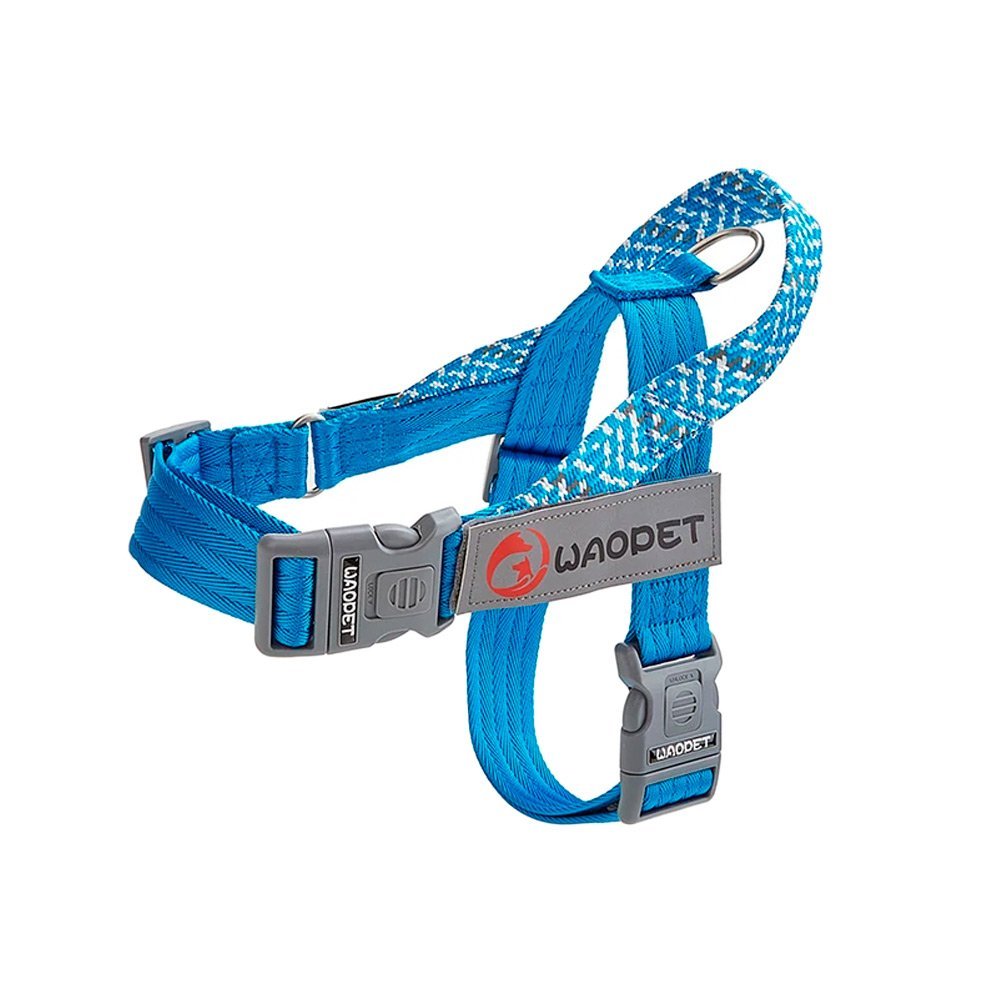Dog Health Awareness: Key Signs, Prevention Tips & Veterinary Care Guide

Introduction to Dog Health Awareness
Being a responsible dog owner encompasses a significant aspect of understanding and monitoring your pet’s health. Unlike humans, dogs cannot verbally communicate their discomfort or pain, which often makes it challenging for owners to identify when their beloved companions are unwell. As such, it is crucial for dog owners to remain vigilant and observant of any changes in their pet’s behavior or physical condition. Subtle signs of illness can easily be overlooked, yet they may indicate that your dog is experiencing distress of some kind.
Regular veterinary check-ups play a vital role in maintaining your dog’s health. These routine visits allow professionals to conduct thorough examinations, ensuring that any emerging health issues are detected early on. By establishing a consistent schedule for veterinary care, dog owners can address potential health problems before they escalate into more serious conditions, thus promoting overall well-being. Furthermore, veterinarians can provide invaluable insights into age-specific health concerns, breed predispositions, and preventative measures tailored to your dog’s unique needs.
In addition to routine care, being aware of behavioral changes is an essential component of dog health awareness. Dogs may exhibit shifts in eating habits, activity levels, or social interactions, all of which can serve as indicators of an underlying health issue. Often, these changes can manifest incrementally, making it imperative for owners to be attuned to their dog’s normal routines and behaviors. By fostering a strong bond with your dog, you create an environment where any signs of discomfort or illness are more likely to be noticed promptly.
Ultimately, the proactive approach to dog health entails understanding your pet’s needs and remaining aware of the warning signs that may indicate sickness. By prioritizing vigilant observation and regular vet visits, pet owners can significantly contribute to their dog’s longevity and quality of life.
Increased Lethargy: A Cause for Concern
Lethargy in dogs is often characterized by a notable decrease in energy levels and activity, which may manifest as persistent sleeping or a lack of enthusiasm for previously enjoyed activities. While occasional tiredness is common in dogs, a marked change in behavior can be indicative of underlying health issues. Owners may observe their pets showing less interest in playtime, refusing walks, or simply lounging around more than usual. Such signs warrant further investigation, as they could signal a variety of medical conditions.
Increased lethargy can culminate from several potential health problems. These may include infections, such as kennel cough or canine influenza, which can sap a dog’s energy. Further, underlying metabolic disorders like hypothyroidism or diabetes may also result in lethargic behavior. Additionally, conditions affecting the heart, lungs, or gastrointestinal system can lead to notable fatigue. Dogs suffering from pain or discomfort may also become more lethargic, choosing to rest rather than engage in physical activities they once enjoyed.
It is imperative for dog owners to monitor and assess any changes in their pet’s energy levels closely. If a dog exhibits increased lethargy lasting more than a couple of days, accompanied by other signs such as vomiting, diarrhea, or changes in appetite, a visit to the veterinarian is essential. Understanding that lethargy is not merely an extension of ordinary tiredness is crucial; it can be a significant sign that something is amiss in a dog’s health. Early intervention may lead to better outcomes, making it vital to remain vigilant and proactive in observing their daily behavior.
Changes in Appetite: Eating Habits to Monitor
Monitoring your dog’s appetite is a vital aspect of ensuring their health and well-being. Appetite changes can serve as telling indicators of underlying health issues. Significant alterations in a dog’s eating habits, such as a noticeable reduction in food intake, complete refusal to eat, or an increase in hunger, warrant immediate attention. These alterations may stem from various health concerns ranging from minor to serious conditions.
For instance, a dog that suddenly stops eating may be suffering from dental problems, gastrointestinal disorders, or systemic illnesses such as kidney disease or infections. Conversely, excessive eating or voracious appetite may signal metabolic issues such as diabetes or parasites. It is essential to be aware of your dog’s normal eating behavior, which can help identify when changes occur. Observations should include the amounts consumed at each feeding and the frequency of meals.
A practical way to track your dog’s food intake is to maintain a journal noting what your dog eats daily, along with any changes in feeding patterns. This record will help you provide accurate information to your veterinarian, should a visit become necessary. If your dog has gone more than 24 hours without eating, or if they exhibit any accompanying symptoms, such as vomiting, lethargy, or behavioral changes, it is imperative to contact your veterinarian promptly. Early intervention can often enhance treatment outcomes and ensure a swift return to health.
In conclusion, being attentive to your dog’s eating habits and addressing any significant changes can be crucial in detecting potential health problems early on. By maintaining awareness and taking appropriate actions, you contribute significantly to your dog’s overall health and quality of life.
Excessive Drinking and Urination: Warning Signs
One of the more concerning indicators of a potential health issue in dogs is excessive drinking and urination, medically referred to as polydipsia and polyuria, respectively. While hydration is essential for any dog, changes in drinking and urination habits can signal underlying health conditions. A normal dog typically drinks about one cup of water per ten pounds of body weight daily. If you notice that your dog is drinking significantly more than this, it may be time to consider whether there is an underlying problem.
Increased thirst and urination can be associated with several health issues, the most common of which include diabetes mellitus and chronic kidney disease. Dogs suffering from diabetes tend to drink and urinate excessively as their bodies struggle to manage glucose levels. Similarly, kidney disease can lead to an inability to concentrate urine, resulting in increased urination and subsequent thirst, as your dog tries to compensate for fluid loss.
Other symptoms that may accompany excessive drinking and urination include weight loss, lethargy, changes in appetite, or alterations in behavior. For instance, a dog that typically enjoys playing may become less active or seem disinterested in interactions. If you notice these changes alongside the shift in drinking habits, it is critically important to consult a veterinarian promptly.
Early diagnosis is essential in managing any potential underlying conditions, as timely intervention can significantly improve your dog’s health. A vet will likely conduct a thorough examination, including blood tests and urinalysis, to determine the cause of the excessive drinking and urination. Ensuring your dog receives proper medical attention can prevent complications and help maintain their quality of life.
Vomiting and Diarrhea: Red Flags in Dog Health
Vomiting and diarrhea are common gastrointestinal disturbances that can be significant indicators of underlying health issues in dogs. While it is not unusual for dogs to experience occasional vomiting or diarrhea, persistent episodes or severe symptoms should not be overlooked. Frequent vomiting can lead to dehydration, which is particularly concerning, as it affects the overall health and well-being of your pet.
Several factors can contribute to these gastrointestinal issues. Dietary indiscretion is a prevalent cause, as dogs often ingest spoiled food, foreign objects, or non-food items. Infections from viruses or bacteria can also lead to vomiting and diarrhea, as well as chronic conditions like pancreatitis, inflammatory bowel disease, or food allergies. It is essential to observe the frequency and severity of these symptoms. If your dog vomits more than once or has diarrhea lasting longer than 24 hours, veterinary attention is warranted.
In emergency situations, immediate care may be needed if your dog shows signs of severe lethargy, blood in vomit or stool, or refuses to drink water. These symptoms can indicate more serious health issues that need urgent evaluation by a veterinarian. Moreover, if your dog appears to be in pain, it is crucial to seek help promptly.
While awaiting veterinary care, maintaining hydration for your dog is of utmost importance. Offering small amounts of water frequently can help avert dehydration. If vomiting persists, withholding food for 12-24 hours may allow the stomach to settle before reintroducing a bland diet of boiled chicken and rice. This gentle approach can often help alleviate gastrointestinal distress while determining the root cause of the symptoms and consulting your veterinarian. Proper monitoring and swift action can significantly impact your dog’s recovery and long-term health.
Coughing, Sneezing, and Breathing Issues: Respiratory Woes
Dogs, much like humans, can experience respiratory issues that manifest as coughing, sneezing, and difficulty breathing. These symptoms may arise due to a variety of underlying conditions, including infections, allergies, or even more serious health problems such as pneumonia or heart disease. Immediate attention to these signs is crucial, as they can significantly impact a dog’s overall health and well-being.
Coughing in dogs can range from mild to severe, and it can be either dry or productive. A productive cough typically indicates the presence of mucus or phlegm, suggesting potential infections or foreign irritants in the airways. On the other hand, a dry cough may suggest conditions such as kennel cough or even heart problems. If a dog exhibits persistent coughing, it is essential to monitor the frequency and intensity, as well as any accompanying symptoms such as fever or lethargy, which may indicate the need for veterinary intervention.
Sneezing, while often benign, can sometimes signal an allergic reaction or respiratory infection. Seasonal allergies may lead to increased sneezing, but if it is accompanied by nasal discharge or difficulty breathing, consultation with a veterinarian is recommended. Signs such as wheezing or labored breathing are particularly concerning; they may indicate bronchial constriction or other serious lung issues. Assessing these symptoms should involve observing the dog’s demeanor, including food intake and energy levels, to gauge the overall impact on their health.
Understanding the severity of respiratory symptoms in dogs is critical. If any combination of coughing, sneezing, or breathing difficulties persists for more than a few days, especially if other alarming symptoms arise, it is vital to seek immediate veterinary assistance. Timely diagnosis and treatment can make a significant difference in outcomes for dogs experiencing respiratory distress.
Unusual Behavior: What to Watch For
Dogs, much like humans, can exhibit a range of behaviors that signal their physical and emotional well-being. When a dog displays unusual behavior, it can be a pivotal indicator of underlying health issues. Changes such as increased aggression, heightened anxiety, or social withdrawal should prompt immediate attention from dog owners. Observing these behavioral shifts is essential as they often reflect the dog’s comfort level and overall health status.
A dog that previously enjoyed playtime with children or other pets suddenly becomes aggressive may be conveying discomfort or pain. This behavioral change could stem from factors such as illness, injury, or stress. Similarly, an otherwise social dog that begins to isolate itself could be struggling with health complications. For instance, changes in mental state or energy levels, which may lead to decreased interest in activities, are significant signals of distress.
Understanding the nuances of a dog’s typical behavior involves recognizing that fluctuations can be normal, especially in response to environmental changes. However, if these alterations persist or escalate, they may require a professional assessment. Behaviorists and veterinarians can help identify the root causes of aggression or withdrawal, whether they be physical illness, neurological issues, or psychological factors.
It’s essential for dog owners to document these behavioral anomalies, including the frequency and context of the changes. By identifying patterns, owners can provide their veterinary professionals with valuable information for accurate diagnosis and treatment. Therefore, remaining vigilant about your dog’s behavior is crucial for ensuring their well-being. Overall, any sudden or drastic change in behavior warrants a closer examination to rule out potential health concerns and ensure your dog’s happiness and health.
Skin Changes: Signs of Illness or Allergies
Changes in a dog’s skin or coat can often serve as a visual indicator of underlying health issues, including allergies or more serious medical conditions. Owners should be vigilant for signs such as excessive scratching, hair loss, or the presence of unusual bumps, as these can be symptomatic of dermatological problems. For instance, persistent itching may be a result of allergies, whether environmental or food-related, making it crucial for pet owners to observe the circumstances surrounding these behaviors.
Hair loss, or alopecia, can also point towards various health challenges. It can be caused by conditions such as hormonal imbalances, skin infections, or even parasites like fleas and mites. If you notice patches of thinning fur or bald spots, it’s important to consult your veterinarian, who can perform the necessary diagnostics to determine the exact cause. Unusual bumps or lumps on the skin could indicate tumors, cysts, or abscesses, making it essential to monitor any changes closely.
Moreover, the condition of your dog’s coat—whether it appears dull, greasy, or patchy—can be an indicator of their overall health. Healthy skin and a vibrant coat typically reflect a well-maintained diet and sufficient veterinary care. In instances where dogs exhibit signs of skin irritation, it is advisable to check for external factors such as diet changes or new grooming products that could trigger allergic reactions. Regular grooming and skin checks can also help in early detection of potential issues.
As a general rule, if your dog displays any combination of these symptoms, it’s best to seek a veterinarian’s opinion. Early diagnosis can greatly improve treatment outcomes, thereby enhancing your dog’s quality of life. Remember that maintaining your dog’s skin health is an integral aspect of their overall well-being.
Injury or Pain: Recognizing Signs in Your Dog
As responsible pet owners, it is crucial to be observant of any signs that may indicate injury or pain in your dog. Dogs are often adept at hiding their discomfort, making it essential for us to recognize subtle changes in their behavior. Common symptoms can include limping, whining, changes in posture, and reluctance to engage in physical activities. A dog that once enjoyed playing fetch may suddenly become hesitant to chase a ball, which could signify an underlying issue.
Pain can arise from various sources, including acute injuries from falls or rough play, or chronic conditions such as arthritis. Sudden limping may indicate a sprain or strain, whereas prolonged changes in behavior can point to joint problems or other chronic pain conditions. Pay attention to how your dog moves; any awkwardness or hesitance in their steps may warrant further investigation.
When examining your dog for signs of pain, a gentle approach is paramount. Start by observing their posture and movement from a distance. If you suspect discomfort, carefully touch around their legs, paws, and joints while watching for signs of flinching or withdrawal. Softly palpating these areas can help you identify any swelling or tenderness, which may indicate an injury that requires veterinary attention. Look for changes in their appetite or sleeping patterns as well, as these can also signal discomfort.
In cases of suspected pain or injury, timely veterinary assessments are critical. A prompt evaluation can lead to appropriate treatment, whether it involves medication, physical therapy, or adjustments to their daily activities. Remember, being proactive in responding to signs of injury or pain not only enhances your dog’s quality of life but can also prevent more serious health issues from developing.
Conclusion: Taking Action for Your Dog’s Health
Monitoring your dog’s health is a crucial responsibility for any pet owner. Throughout this article, we have outlined ten key signs that may indicate your canine companion is unwell. These signs, including sudden changes in appetite, excessive thirst, unusual behavior, or persistent coughing, should not be overlooked. As attentive guardians of our pets, it is essential to recognize these indicators early on to ensure timely medical intervention.
Prompt action when you notice any of these symptoms can significantly impact your dog’s recovery. Many health conditions can escalate quickly if left untreated, making regular veterinary check-ups critical for early detection and prevention. Routine visits to the veterinarian not only help identify potential issues before they develop into serious concerns, but they also provide an opportunity for dog owners to discuss any observed behavior changes and receive professional guidance on maintaining their pet’s health.
Establishing a solid relationship with your veterinarian is vital in advocating for your dog’s health. Regular communication about your pet’s diet, exercise, and general well-being fosters a collaborative approach to health care. A veterinarian can offer valuable advice tailored to your dog’s specific needs, ultimately leading to a longer and healthier life for your furry friend.
In summary, being vigilant about your dog’s health and recognizing the signs of illness is paramount. It empowers owners to take necessary actions while reinforcing the importance of preventive care through regular veterinary visits. By actively participating in your dog’s healthcare, you ensure their well-being and reinforce the bond that makes the journey of pet ownership so rewarding.













